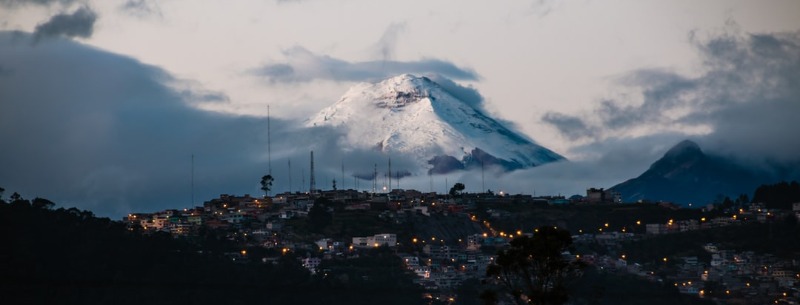Quito, capital city of Ecuador
The setting of Quito will strike you speechless. Flanked by volcanic peaks and spread across a lush Andean valley, the Ecuadorian capital is one of the most enchanting cities in the world. A massive restoration project completed in 2006 brought the historic district back to life, restoring the colonial splendor that earned it recognition as a UNESCO World Heritage site in 1978. The “new town” is just as intriguing, where trendy cafes sit near art galleries, glitzy high-rises and massive government complexes. A distinct Ecuadorian flair defines the atmosphere in both areas, enticing visitors to explore the narrow streets, awe-inspiring churches, colonial homes, museums and more.
The true soul and spirit of Quito is most alive in the Old Town. A marvel to wander, the district is steeped in history and legends. Founded hundreds of years ago by indigenous laborers and artisans, the Old Town still retains its charm in churches, chapels, convents, monasteries, plazas and museums. Walking through the winding streets is an assault on the senses. Street vendors shout out details of the day’s best deals, taxis toot their horns as ambling pedestrians take their time crossing the streets, accordion players make sweet music on the corners and the air is thick with the scent of spices.
At the heart of the Old Town is the Plaza San Francisco, a sweeping cobblestone square surrounded by whitewashed walls in the shadows of the Monastery of San Francisco, the oldest church in Ecuador. Completed in the late 16th century, the monastery is also the largest colonial structure in Quito. Filled with delightful design details, the church is a spectacular example of Moorish influences and baroque carving.
Quito is a very green city, and the Parque la Alameda is one of the best places to escape the hustle and bustle of the city center. There, a statue of Simon Bolivar stands near a pair of ornamental lakes often dotted with rowboats. Not far away is the Parque el Ejido, the city’s largest open green space. Locals often gather there for lively games of volleyball and soccer, and the park nearly overflows with activity on the weekends. Local artisans flaunt their talents at open-air shows, farmers sell fresh produce and musicians give free concerts.
Quito’s many museums give visitors better insight into Ecuador’s history, people and culture. One of the most remarkable museums is the Museo Guayasamín, dedicated to the famous painter. In addition to displaying the world’s most complete collection of his work, the museum also contains an outstanding array of pre-Colombian ceramic, bone and metal pieces excavated from around Ecuador.
Other museums worth visiting include the Museo Etnográfico de Artesanía de Ecuador, dedicated to the country’s indigenous peoples, the Museo Franciscano, which includes some of the finest religious artwork in the world, the Capilla del Hombre, a tribute to the poor of Latin America, and the Museo de Arte Colonial, the country’s best collection of colonial art.
Quito is filled with so many sights to explore, it is difficult to choose the best. Other interesting sights include the old town of El Panecillo, the grand and picturesque Palacio de Gobierno, the ornate Compañía de Jesús church, the modern and chic Avenida Amazonas, the Basilica del Voto Nacional, the fully-functioning Monastery of Santa Catalina and the Casa Museo María Augusta Urrutia, a beautifully preserved 19th-century home marked by vibrant stained-glass windows, lush courtyards, and period furnishings. These are just a few of the many sights that will make you fall in love with Quito.
Quito Geographical Location
Quito is located in the northern center of Ecuador in the Guayllabamba river basin and is surrounded by numerous volcanoes.
The approximate population of Quito is 2,700,000.
Quito Language
Spanish is the official language of Ecuador but Amerindian languages are still present throughout the country.
Quito Predominant Religion
- 95% Roman Catholic
- 5% Other
Roman Catholicism is sometimes synchronized with indigenous beliefs in rural areas.
Quito Currency
The US Dollar is the official currency of Ecuador.
Quito Climate
Temperatures are consistent throughout the year in Quito, usually cool and pleasant. Rainfall is also relatively consistent with the exception of a short dry season from June until August in which there is less rain.
Quito Main Attractions
- Plaza de la Independencia
- El Sagrario
- San Francisco Church and Plaza
Other Attraction in Quito
- Centro Cultural Metropolitano
- El Panecillo
- Quito Botanical Gardens
- Terefico
